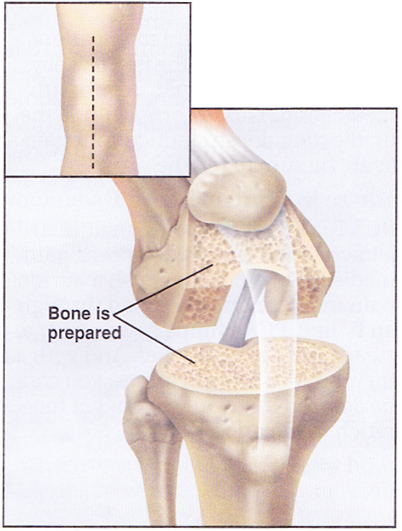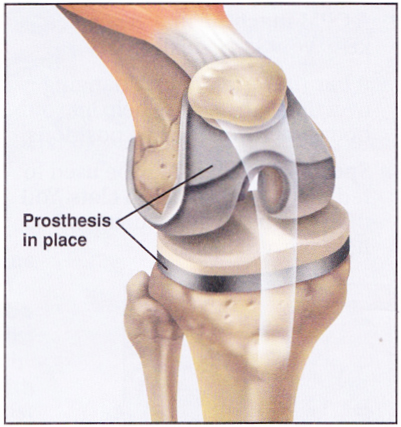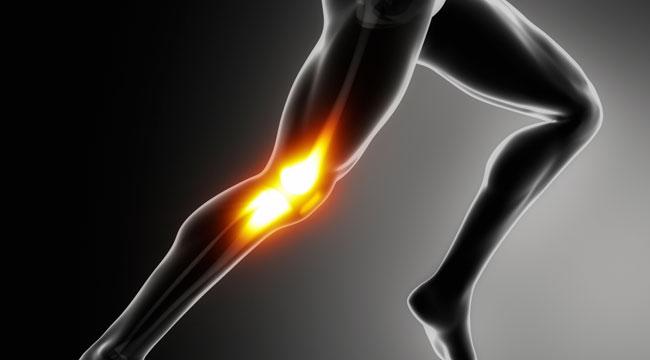Knee Replacement Surgery
If your knee is severely damaged by arthritis or injury, it may be hard for you to perform simple activities, such as walking or climbing stairs. You may even begin to feel pain while you are sitting or lying down.
If nonsurgical treatments like medications and using walking supports are no longer helpful, you may want to consider total knee replacement surgery. Joint replacement surgery is a safe and effective procedure to relieve pain, correct leg deformity, and help you resume normal activities.
The most common cause of chronic knee pain and disability is arthritis. Although there are many types of arthritis, most knee pain is caused by just three types: osteoarthritis, rheumatoid arthritis, and post-traumatic arthritis.
A knee replacement (also called knee arthroplasty) might be more accurately termed a knee “resurfacing” because only the surface of the bones is actually replaced.
People who benefit from total knee replacement often have:
- Severe knee pain or stiffness that limits your everyday activities, including walking, climbing stairs, and getting in and out of chairs. You may find it hard to walk more than a few blocks without significant pain and you may need to use a cane or walker
- Moderate or severe knee pain while resting, either day or night
Chronic knee inflammation and swelling that does not improve with rest or medications
Knee deformity — a bowing in or out of your knee - Failure to substantially improve with other treatments such as anti-inflammatory medications, cortisone injections, lubricating injections, physical therapy, or other surgeries
Everyone tends to ignore their knees while they are working smoothly. No-one thinks about them until something goes wrong. But when a problem knee causes discomfort and interferes with normal activities, everyone suddenly realizes how important our knees truly are. The following symptoms may be the first warning of knee problems:
- Pain is the most common complaint. It can vary from recurring vague discomfort to sudden, severe pain following an injury.
- Swelling immediately following an injury is usually due to bleeding inside the joint. Swelling with clear fluid can come on more slowly and is a sign of some internal knee irritation.
- Locking or “giving way” can be due to a variety of causes, but is most often associated with mechanical problem or a “loose body” in the knee.
- Limited movement or stiffness may be noted at certain times of the day or may occur soon after injury.
- Grinding or cracking may be noticed in the knee. This may indicate a roughening of the bone or articular cartilage.
If you have pain or any combination of these problems, it is important to CONTACT US as soon as possible. Our email address is info@orthovallarta.com or call us toll free 866.509.0571 or internationally at +1817.405.2778.
Knee problems tend to worsen quickly when the knee is not fully used because of injury or disease. Although we usually can diagnose and treat a knee problem successfully, only you can build strong supporting thigh muscles that can help prevent knee injuries by doing faithfully the knee exercises that The Orthopedic Surgeon recommends.
The Surgical Procedure
When the surgical team is ready, you´ll be taken to the operating room. There you´ll be given anesthesia. The anesthesia will help you sleep through surgery, or it will make you numb from the waist down. Then an incision is made on the front or side your knee. Any damaged bone is cleaned away, and the new joint is put into place. The incision is closed with staples or stitches.
The incision is about 8 to 10 inches long, and is often on the front of the knee.
 Preparing the bone All of the bone surfaces of the joint are shaped to hold the prosthesis. Then the parts of the prosthesis are put in place. At this point, The Orthopedic Surgeon will tests the fit and alignment of the prosthesis.
Preparing the bone All of the bone surfaces of the joint are shaped to hold the prosthesis. Then the parts of the prosthesis are put in place. At this point, The Orthopedic Surgeon will tests the fit and alignment of the prosthesis.
 Joining the new parts. If the prosthesis fits correctly, its parts are secured to the thighbone, kneecap and shinbone. Then these parts are joined. Together they form the new joint.
Joining the new parts. If the prosthesis fits correctly, its parts are secured to the thighbone, kneecap and shinbone. Then these parts are joined. Together they form the new joint.
In the Recovery Room
After surgery you´ll be sent to the recovery room, also called the PACU (postanesthesia care unit). Your condition will be watched closely, and you´ll be given pain medications. You may have a catheter (small tube) in your bladder and a drain in your knee. This machine gently bends the knee to keep it from getting stiff.
The Orthopedic Surgeon will then check in on you and make sure you are doing well.
Please feel free to contact us with any questions. You may also always call us TOLL FREE: 866.509.0571 or +1817.405.2778 or SEND US AN EMAIL to info@orthopv.com
